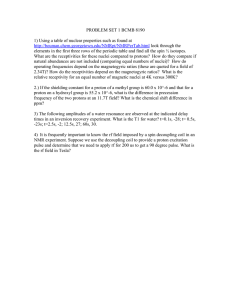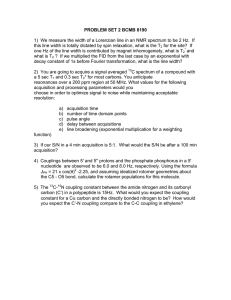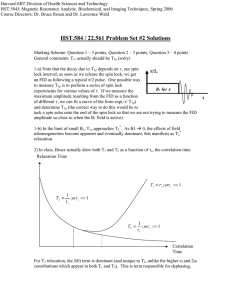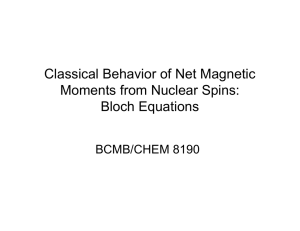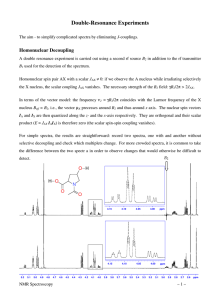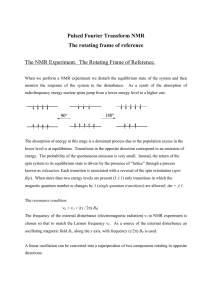PROBLEM SET 1 BCMB 8190 look through the
advertisement
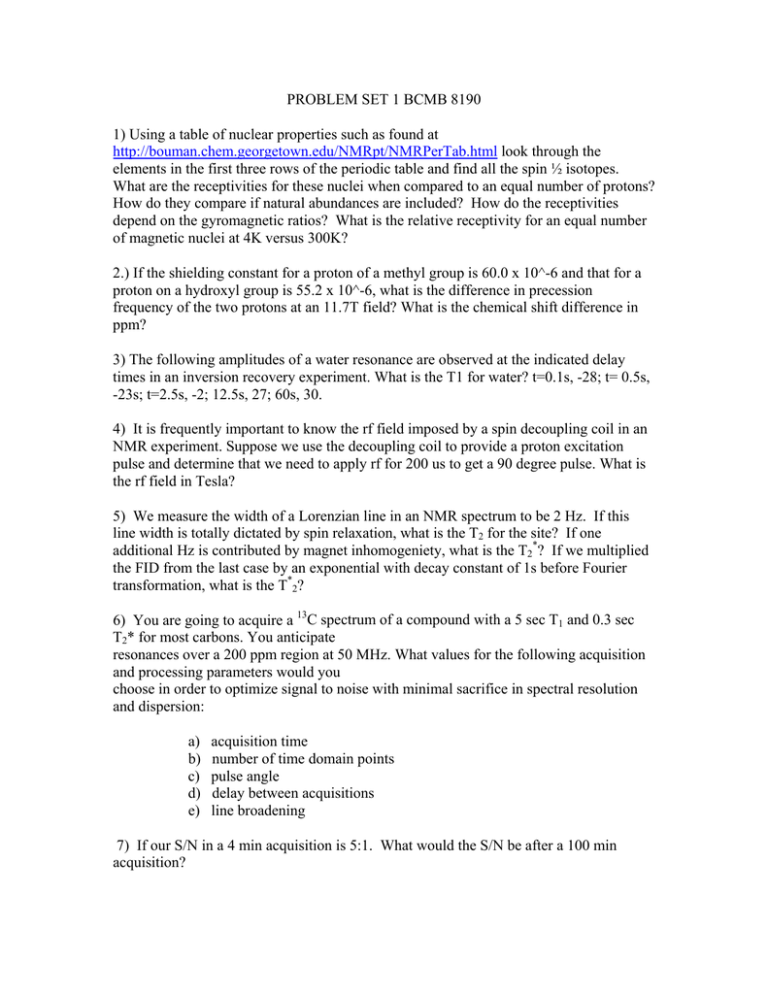
PROBLEM SET 1 BCMB 8190 1) Using a table of nuclear properties such as found at http://bouman.chem.georgetown.edu/NMRpt/NMRPerTab.html look through the elements in the first three rows of the periodic table and find all the spin ½ isotopes. What are the receptivities for these nuclei when compared to an equal number of protons? How do they compare if natural abundances are included? How do the receptivities depend on the gyromagnetic ratios? What is the relative receptivity for an equal number of magnetic nuclei at 4K versus 300K? 2.) If the shielding constant for a proton of a methyl group is 60.0 x 10^-6 and that for a proton on a hydroxyl group is 55.2 x 10^-6, what is the difference in precession frequency of the two protons at an 11.7T field? What is the chemical shift difference in ppm? 3) The following amplitudes of a water resonance are observed at the indicated delay times in an inversion recovery experiment. What is the T1 for water? t=0.1s, -28; t= 0.5s, -23s; t=2.5s, -2; 12.5s, 27; 60s, 30. 4) It is frequently important to know the rf field imposed by a spin decoupling coil in an NMR experiment. Suppose we use the decoupling coil to provide a proton excitation pulse and determine that we need to apply rf for 200 us to get a 90 degree pulse. What is the rf field in Tesla? 5) We measure the width of a Lorenzian line in an NMR spectrum to be 2 Hz. If this line width is totally dictated by spin relaxation, what is the T2 for the site? If one additional Hz is contributed by magnet inhomogeniety, what is the T2*? If we multiplied the FID from the last case by an exponential with decay constant of 1s before Fourier transformation, what is the T*2? 6) You are going to acquire a 13C spectrum of a compound with a 5 sec T1 and 0.3 sec T2* for most carbons. You anticipate resonances over a 200 ppm region at 50 MHz. What values for the following acquisition and processing parameters would you choose in order to optimize signal to noise with minimal sacrifice in spectral resolution and dispersion: a) b) c) d) e) acquisition time number of time domain points pulse angle delay between acquisitions line broadening 7) If our S/N in a 4 min acquisition is 5:1. What would the S/N be after a 100 min acquisition?
